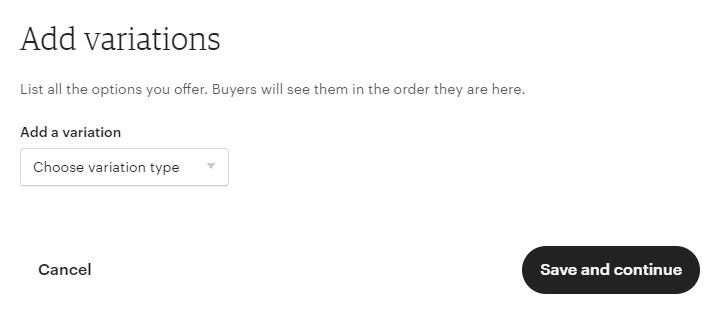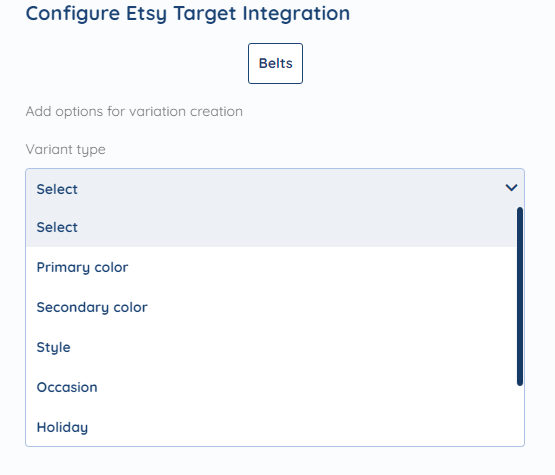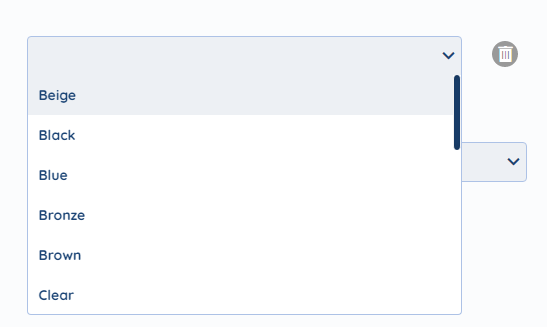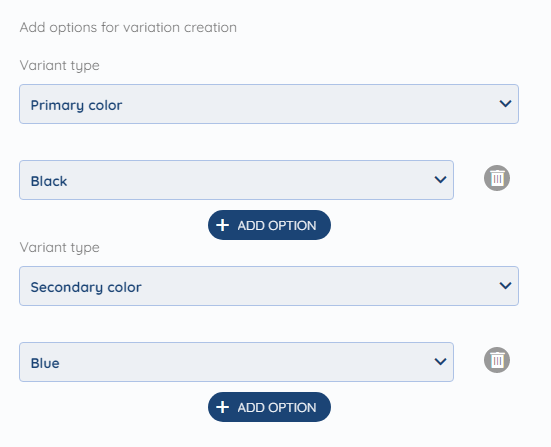TABLE OF CONTENTS
1. What are Variations?
Variations are attributes that differentiate products from one another ( in this case Parent Variation would be a T-Shirt and the child variations would be the color of the T-Shirt and size)
If you offer different options for an item within the same listing, you can add those options as variations. You can offer up to two types of variations for each listing. For example, if you sell a dress with different sizes and colors, you can specify these options in that dress listing's variations.
2.How to create Variations in Etsy?
If you already have a listing (product) for your shop, scroll down to navigate to the "Variation" Settings.

How to Add Variations to Your Etsy Listing?
Adding variations will require you to take several steps. You can do it when you’re creating a new listing or by editing an already existing one. Here’s where to start:
1. Go to the Listings page and click on the listing you want to edit.
2. In the Category dropdown, select one or more options.
3. You’ll now be able to see relevant attributes. Pick I offer more than one.
4. It’s time to scroll through the page down to Variations and click Add variations.
5. Select Choose variation type and pick the type of variation you want to offer to your customers.

6. Under the variation type, check the box to provide different SKU numbers, quantities, and prices.

7. Click Save to finish up.
8. You’ll see Variations pop up. It’s where you can edit the variations you’ve added to your listing.
That’s it. You’ve now added variations to your listing.
You can change the order of the variations on your listing. All you have to do is click on Edit variations and simply drag the options in the order you prefer.
What Variations Can You Add to Your Etsy Listing?
Etsy offers a wide range of variations to sellers. You can practically provide any type of variation that you’d like. They include:
Price - You can add different prices to different variations.
Size - If you’re offering a product in different sizes, you can easily add them as variations to your listings.
Custom variation - If you don’t see a variation you’d like to offer, you can always make your variation first and offer them to your customers. One important disclaimer, though, users can find your listing by filtering your custom variation.

IMPORTANT NOTE: In case the buyer wants something unique, they can always request a custom order. Here’s how you can offer one.
3.How to use Etsy Variations in Syncspider?
After you have set up your task in Syncspider, go to the "Target Configuration".
Here we will choose if we want to "Activate Listings Automatically" or if we wish to choose them from Root.
For this use case we will be using only one Listing and that listing will be "Accessories/Belts".

After we have chosen all the listings we wish. We can continue to the next step of "Target Configuration".
Here we will choose the Variation "type" and "option" for that specific Variation

For this use case we will be using "Primary color" (which is the Type) and the color of it (which is the option).

And "Secondary Color" as the second variable. (choose the variation option as per your use-case).

IMPORTANT NOTE: Etsy can only process up to 70 variations for one given product. If you have more than 70 variants for a product enabled, Etsy will reject such a product.
Now that we have set up our variations,. Its time to map them.
On the left side of the mapping, we will find our 2 Properties ( which are Variations, Property 1 is Primary Color and Property 2 is secondary color).

And on the right side of mapping we will find our Variation Fields that we need to connect the Property fields to.

IMPORTANT NOTE, For this to work properly even without variations you will have to map all of the orange dotted fields (such as Title, Description, Quantity, Price, Who made, When Made, Taxonomy ID, Shipping Profile and SKU)
Simply connect your Property field 1 with Primary Color.
Was this article helpful?
That’s Great!
Thank you for your feedback
Sorry! We couldn't be helpful
Thank you for your feedback
Feedback sent
We appreciate your effort and will try to fix the article

